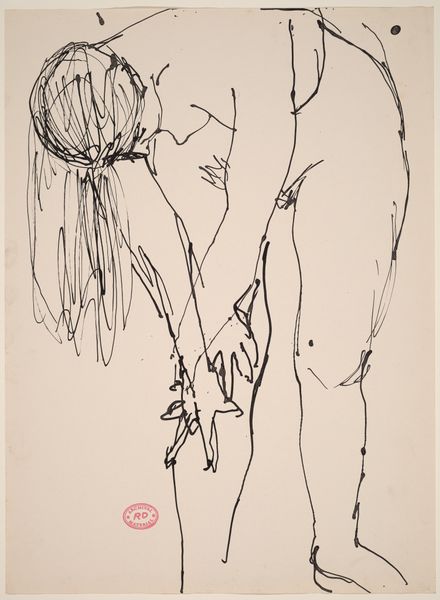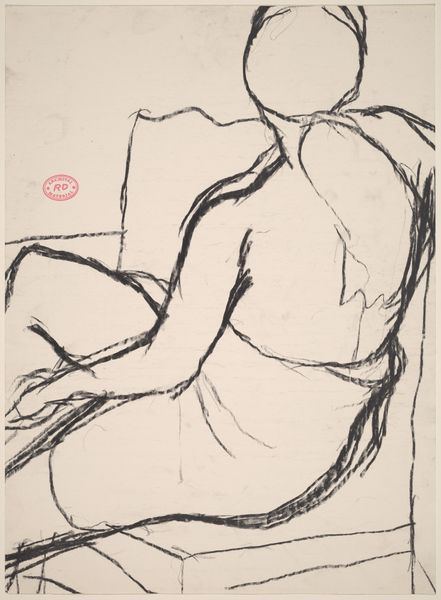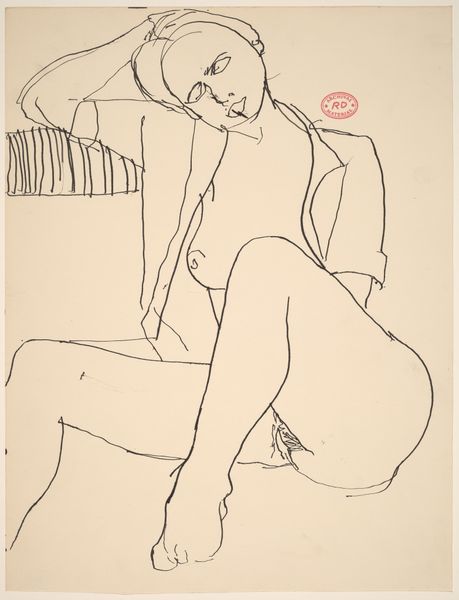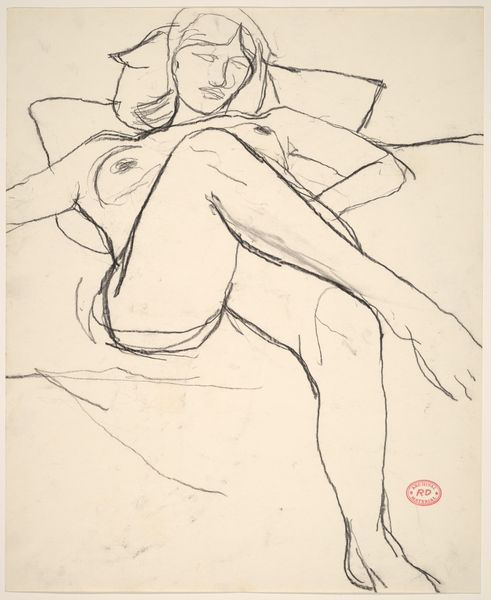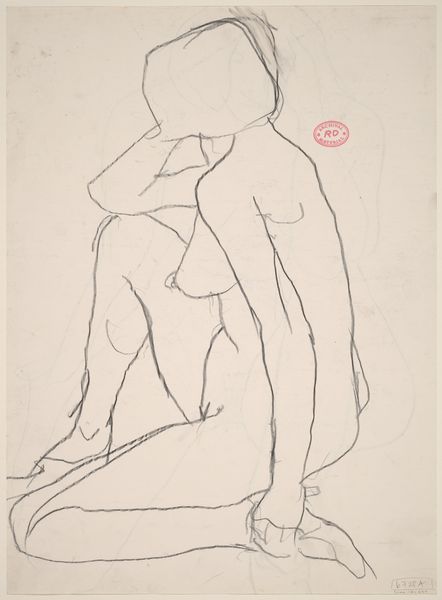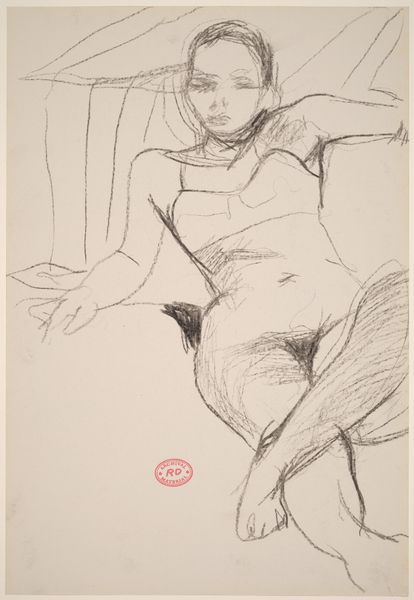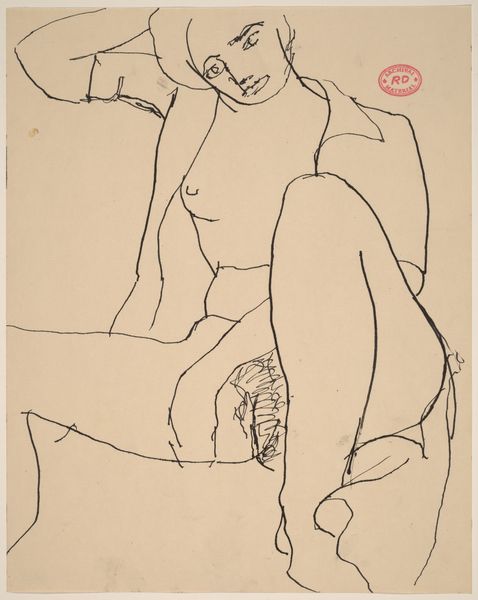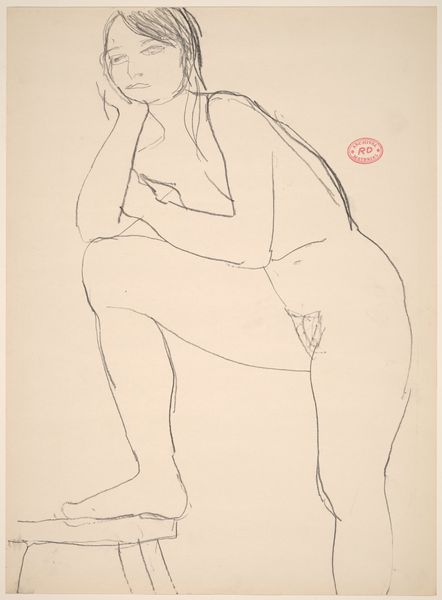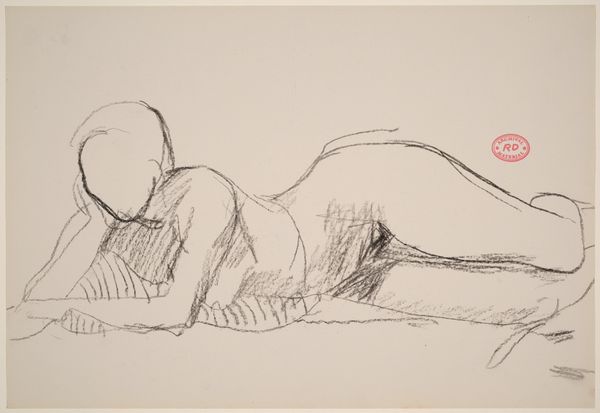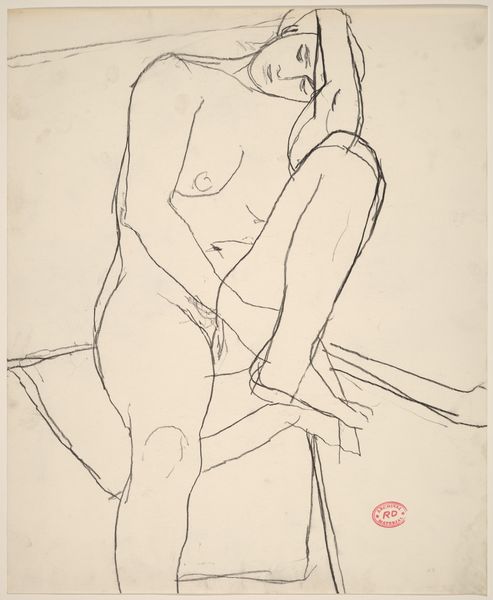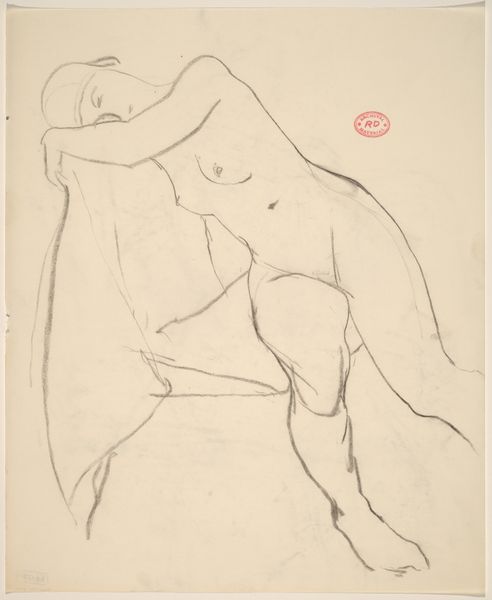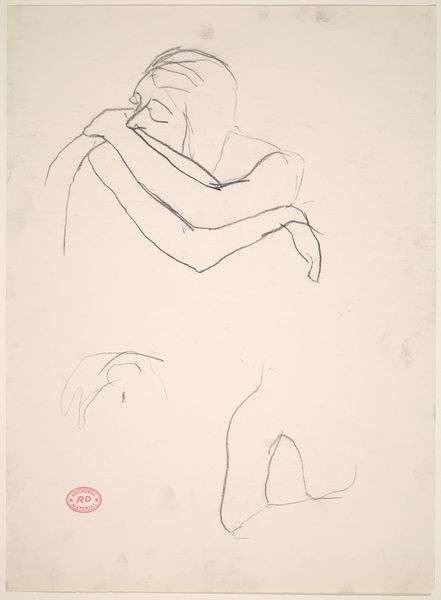![Untitled [seated nude with crossed legs reaching down] by Richard Diebenkorn](/_next/image?url=https%3A%2F%2Fd2w8kbdekdi1gv.cloudfront.net%2FeyJidWNrZXQiOiAiYXJ0ZXJhLWltYWdlcy1idWNrZXQiLCAia2V5IjogImFydHdvcmtzLzI0MTkzMGY1LTU1YTYtNGFiNS04OWZmLTA1YmY3MjdmODM0NC8yNDE5MzBmNS01NWE2LTRhYjUtODlmZi0wNWJmNzI3ZjgzNDRfZnVsbC5qcGciLCAiZWRpdHMiOiB7InJlc2l6ZSI6IHsid2lkdGgiOiAxOTIwLCAiaGVpZ2h0IjogMTkyMCwgImZpdCI6ICJpbnNpZGUifX19&w=3840&q=75)
Untitled [seated nude with crossed legs reaching down] 1955 - 1967
0:00
0:00
drawing, pencil
#
drawing
#
contemporary
#
figuration
#
bay-area-figurative-movement
#
pencil
#
nude
Dimensions: overall: 43.2 x 35.6 cm (17 x 14 in.)
Copyright: National Gallery of Art: CC0 1.0
Curator: This is an untitled pencil drawing by Richard Diebenkorn, created sometime between 1955 and 1967. It depicts a seated nude, with crossed legs reaching down. What are your initial thoughts? Editor: Stark and introspective. The dense hatching emphasizes a shadowy, almost melancholic mood. There is a definite compositional tension; it feels unresolved, incomplete. Curator: It is interesting how the artist chose to leave several parts of the composition so open, as in the face. Given Diebenkorn's involvement with the Bay Area Figurative Movement, do you feel like this artwork reflects that focus? The figure is the only focus. Editor: Figurative, yes, but not celebrating form in a classical sense. I find it fragmented, almost anxious. I notice how the strong lines defining the legs contrast with the almost frantic, obscured upper body, giving a very unstable reading to the figure. I would point out, too, that we, as viewers, gaze downward at her, mirroring, perhaps, her own gaze and emotional interiority. Curator: And it’s precisely that internal gaze that feels so compelling. Consider Diebenkorn's socio-political context—the Cold War era, a period rife with anxieties about the body, sexuality, and representation. Editor: Ah, yes, now I see it—that emotional discomfort mirrored formally within the composition itself, as the use of line weights moves across the form in varying, unbalanced relationships. The sharp angles seem at odds with the body’s natural curves. Curator: I find that imbalance crucial to understanding Diebenkorn’s explorations of the self and the female body amid post-war America’s changing attitudes about gender. The fragmented rendering really underscores this as being the most important element of the drawing. Editor: It strikes me that the formal elements here act as an index to psychological disruption, as a way of understanding internal complexities—something easily missed without that extra context. Thank you. Curator: And thank you; it is enriching to reflect on form and its intimate ties to our socio-historical awareness.
Comments
No comments
Be the first to comment and join the conversation on the ultimate creative platform.

